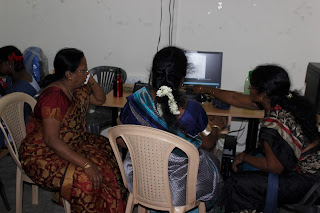ICT Report
Introduction to Free
Software
Free Software is software
which provides users to study, modify, copy and re-distribute the software
based on their needs. This software released under the GPL (General Public
License).
Why free software in schools?
ü The computer source is completely open to all, students able
to the learn the code and helps to improve the code, redistribute the code with neighbors .
ü Free software can save schools money. Savings are possible
because free software gives schools, like other users, the freedom to copy and
redistribute the software; the school system can give a copy to every school,
and each school can install the program in all its computers, with no
obligation to pay for doing so.
ü Schools have a social mission: to teach students to be
citizens of a strong, capable, independent, cooperating and free society.
ü Free software permits students to learn how software works.
Some students, natural-born programmers, on reaching their teens yearn to learn
everything there is to know about their computer and its software.
Implementation
Free Software group took special interest in promoting the main
aspects of the philosophy of the everyone having equal opportunity without any interpretation
such as the freedom to share knowledge and the freedom to cooperate with our
community by contributing improvements to computer programs. This awareness
about Free software was largely the
result of what we learned at the meeting organized by the Free Software
Hardware Movement , in the nearby city of Pondicherry. Attending those
meetings also helped us to work in close connection with the Free Software
community.
How We Did It
ü
Academicians from Free software group conduct pre-test for
students and take analysis report based on that they prepared syllabus .
ü
They selected nearly 150 students from Class VI to IX. They had
taken ICT training session for students
from computer basics to programming for
3 months.
ü
They had provided resource materials for ICT Classes for further
improvement of students.
Training was not
limited to software, it also included teaching the basics of hardware
maintenance to teachers and students. In our school, 14 years old students know
how to assemble a PC.The use of Free programs in the classroom was facilitated
by the implementation of training modules aimed at instructing teachers on the
use of specific programs for teaching various subjects. For example, there was
a training module for teachers of Mathematics on how to use Dr Geo for teaching geometry, another one for teachers of Chemistry
on how to draw organic molecules using Chemtool, and many others.
Other training activities were
conducted jointly by the school and FSHM Pondicherry to teach us the use of different Free Software
applications such as Blender, Inkscape, and the command line interface.
Commitment to Free
Software
At the beginning the new system was used on a dual-boot
basis, because we teachers were not familiar with Free Software, but we soon
got acquainted with it to a great extent. Free Software is being used in the
classroom and in the administration offices. We use a wide range of free
programs in the classroom, such as GIMP, Tux Paint, Audacity, GPeriodic and LibreOffice, but there are many others.
Students are also introduced to Wikipedia(Online Encylopedia)
Result
Education in the State of Puducherry has become "IT-enabled", meaning
that students are getting first hand technology knowledge while learning
regular curriculum subjects outside the IT Lab. This is possible due to the
large number of high quality educational applications available in GNU/Linux.
Real time work of teachers and students at our school ICT Lab.





No comments:
Post a Comment